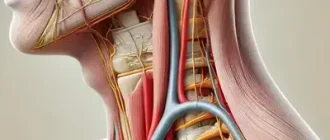Our hands and wrists are an essential part of our body that enables us to perform various tasks. However, when our palms hurt, it can affect our ability to carry out these tasks and lead to discomfort and reduced quality of life. Here are six causes of palm pain, and how to treat them:
- Palm Injuries: Palm injuries can result in pain, swelling, and bruising.
- What to do: Resting the injured area, applying ice to the affected area, and wearing a compression bandage can help alleviate the pain. If the condition persists, it’s best to consult a doctor.
- Soft Tissue Damage: Palm contains various soft tissues like ligaments, muscles, and tendons that can get damaged due to RSI.
- What to do: Applying the RICE protocol, using over-the-counter pain relief, or physical therapy can provide relief from pain.
- Metacarpal Fractures: Trauma to the palm can cause breaks in one or more of the metacarpals.
- What to do: Splints or casts can help treat mild fractures, while severe fractures may require surgery.
- Repetitive Strain Injury (RSI): RSI occurs when a person carries out repetitive or high-intensity activities for extended periods or holds the hands in awkward positions.
- What to do: Treatment for RSI includes identifying the cause and modifying it to reduce motion, stopping the activity responsible, and taking pain relief medication such as acetaminophen.
- Hypothenar Hammer Syndrome: This condition occurs when blood vessel damage in the palm causes pain and numbness due to a golf club handle’s repeated impact.
- What to do: A doctor’s evaluation is necessary before taking any pain medication.
- Trigger Finger: Trigger Finger occurs when the ring of connective tissue at the base of a thumb or finger becomes swollen, making it difficult for the tendon to move.
- What to do: Splints, anti-inflammatory drugs, steroid injections, or surgery can alleviate this condition.
When our palms hurt, we may find ourselves unable to perform everyday tasks comfortably. Knowing what causes palm pain and how to treat it can help alleviate discomfort and improve our quality of life. Remember, if the pain persists or worsens, it’s always recommended to consult a doctor.
If you are experiencing severe, intolerable pain in the palms of your hands, it is important to see a doctor to determine the underlying cause.
The treatment of palm pain depends on the underlying cause, severity, and duration of the pain. Pain relief medication, both prescription and over-the-counter, may be recommended, but it is important to always follow the advice of a doctor or pharmacist.
Non-medical interventions may also be helpful in reducing pain, such as:
- Resting the affected hand and avoiding activities that exacerbate the pain.
- Applying ice to the affected area for 20 minutes at a time, several times a day.
- Wearing a compression bandage to prevent swelling and additional blood loss.
- Keeping the hand elevated above the heart to help reduce swelling.
- Doing gentle exercises to help ease pain and stiffness.
- Using a splint to support the palm and reduce pain, especially at night.
When to seek medical help? If the pain continues to be severe, intolerable, and starts interfering with your daily activities, it is important to seek medical help. Additionally, if you experience any of the following, it is crucial to seek immediate medical attention:
- You are unable to move your thumb or hold onto things.
- Your finger or thumb has changed shape or color.
- You have lost feeling in any part of your hand.
- You have a painful palm and feel unwell with a high temperature.
- Your palm is painful, warm, swollen, and stiff.
Remember to always follow the advice of a doctor or pharmacist and do not hesitate to seek help if needed.
About the Author
Reyus Mammadli is the author of this health blog since 2008. With a background in medical and biotechnical devices, he has over 15 years of experience working with medical literature and expert guidelines from WHO, CDC, Mayo Clinic, and others. His goal is to present clear, accurate health information for everyday readers — not as a substitute for medical advice.







